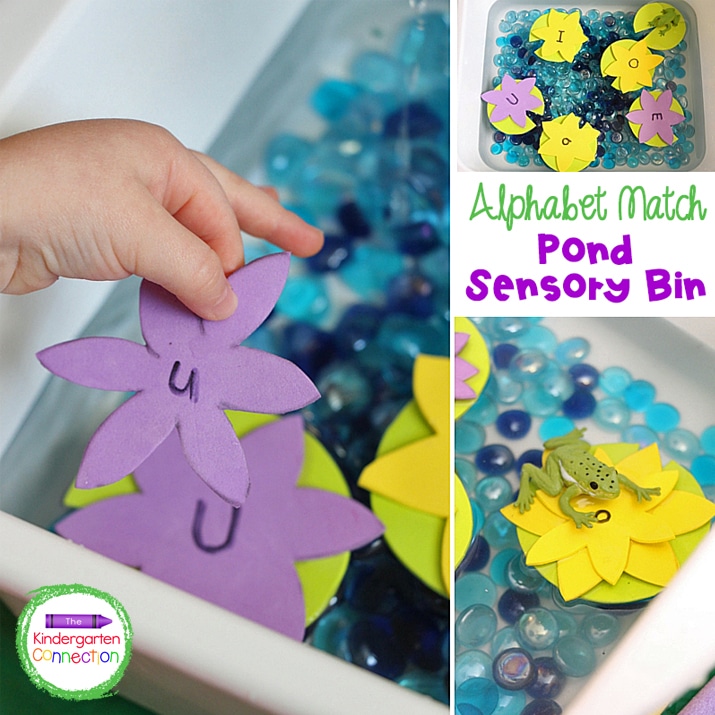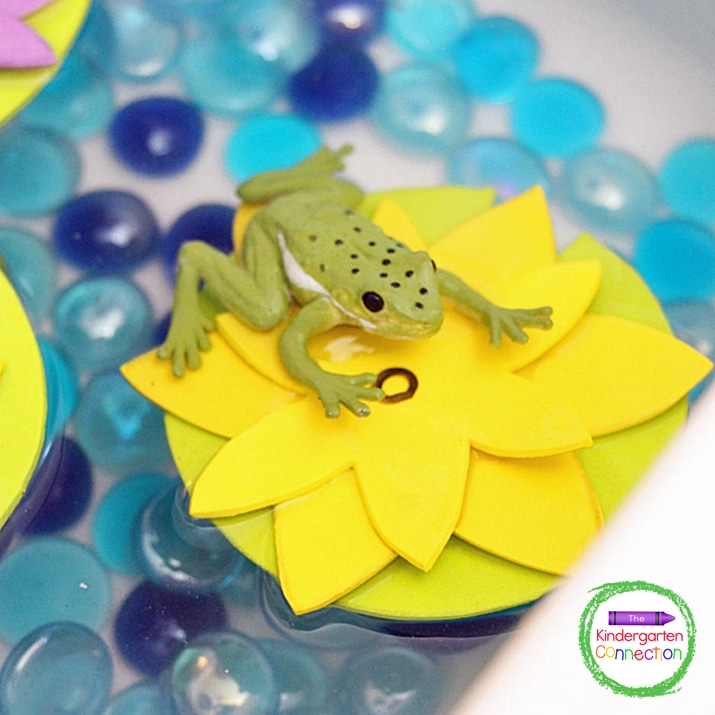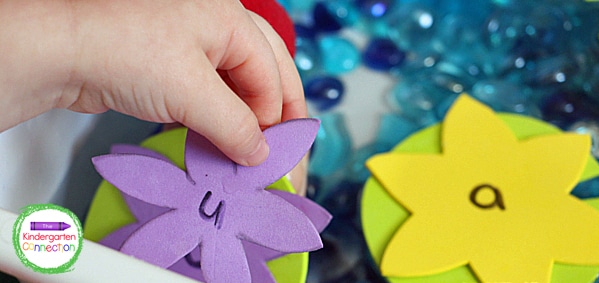After making our Frog Life Cycle Play Dough Kit, we had all of these cute lily and lily pad cutouts that I didn’t want to go to waste, so I thought turning them into a fun game of upper- and lower-case matching would be a great use. One of my favorite ways to present hands-on learning opportunities is with sensory bins, like this alphabet match pond sensory bin!

Sensory play is a wonderful way to provide children with integrative learning opportunities. Children learn in a deeper way when they are fully engaged in their learning, and that sensory component can help engrain those new concepts even deeper into their understandings. Sensory play stimulates our brains in a very different way than regular learning does.
I definitely need to give credit to my friend Alecia over at Learning to Walk for the inspiration behind this sensory bin – she previously made this Jello Pond Dive Sight Word Match for her daughter, and I love that twist of using laundry clips to grab the words she was matching. (Which would work well for this bin, too!)

First, gather your materials:
To make the lilies, I just looked at a picture on Google Images and made a basic template that I traced several times onto yellow and purple foam. I traced the outside of a cup onto green foam for the lily pads and then cut a slit in each for that classic lily pad look.
Now, I just added letters to the foam lilies, but you could use a permanent marker and transform all of the glass rocks into little letter stones! These would be a great learning material in the classroom or home with countless potential uses – well worth the initial time investment.
I set up the bin at first by just placing the glass beads at the bottom of our sensory bin, then adding water until it was halfway filled, and topping with a couple frogs and the lily pads.
I laid the lilies out around the sensory bin and explained to the kids that we wanted to fill the pond with beautiful lilies, but we could only add the lilies to their lily pads once we had matched the upper and lower case letters.
(This time we just started out with the vowels, but if you had a larger water table you could do all letters at once, or do batches – just ensure that the upper and lower case for each letter are in the same batch!)

The kids were really excited to get their hands in the sensory bin, so they quickly worked together to match the upper and lower case letters, placing them on top of each other and then on top of each lily pad until each of the lily pads were full and all letters had their match. After that, watery chaos ensued.
If you wanted to extend the play, you could encourage emergent readers to place the lily letters into small three-letter word sequences, or encourage children to place letters in alphabetical order. You can even use the frogs to hop from letter lily to letter lily to spell out different words, or practice letter recognition. There are so many different ways to play with this bin and get more use out of your materials.
Just make sure that in between each challenge you give the kids enough time to reap the reward of successful matching – splashing in the water!

How do you use sensory bins in your learning centers?
Looking for more alphabet sensory bins? Try our peas and carrots alphabet sensory bin – it is sure to be a hit with your kids too!
Your planning will be so much easier with instant access to:
Be sure to request an invitation so that you don’t miss your chance to be part of the best early childhood club around!
